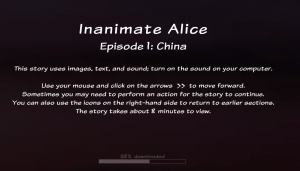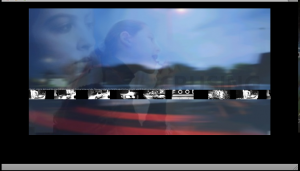Established Storytelling Adapted
On what’s currently happening to established forms of storytelling in the digital age.
Part of the issue in figuring out where fiction will go from here is to determine whether current forms will be improved or whether new forms will be invented. The novel was not a huge departure from its predecessors. It was simply a longer story. So it’s really more of an enhancement of previous fiction rather than a complete revolution, like film.
What will happen from here on out, though? Will we maintain current forms of fictional stories and adapt them to the web, or will we come up with fundamentally different ways of delivering narrative? That’s the question.
In a talk he has given multiple times, Kevin Kelly of Wired Magazine explains that when internet content was starting to take off in the 90s, the powers that be thought it would be like “TV, only better.” But it surprised them because a) it wasn’t at all like TV, and b) it ended up producing content nobody could have predicted.
I have no illusions here: I don’t claim to know what will happen with the future of storytelling. But we can look at what has happened already in the relatively short period of time that digital media has thrived. And today, I’d like to examine how already-established forms of storytelling are faring in this new media environment.
I want to first mention the novel, even though I know I’ve already said quite a bit about it. The Kindle, and various other ebook readers, were developed for one primary purpose: to keep the novel alive. Or, if not the novel, then at least novel-length books. That’s one of the reasons I don’t see the novel dying any time soon. It’s a priority for our society still. We’re creating technology for it.
On the other hand, I don’t see the novel faring well online with our current web interfaces. For all the reasons I stated earlier, I think shorter chunks are the key to the current digital media environment. So what about serialized novels, you ask. Good question.
I don’t think they’re doing too well either. That’s not to say there aren’t lots of them. There are. They go by the name “webserials.” And you can find plenty of them at webfictionguide.com. But for now, they remain one of those relatively obscure niches on the web, mostly populated by aspiring authors.
For webserials to really be successful, they’re going to have to be featured on sites that attract readers. This has been done, too. Sites like Salon, boingboing, and Slate have published serialized fiction. But they have some problems. The Salon one, according to one reader, just kind of faded into obscurity by the 35th installment (I can’t verify that). The boingboing one linked to a pdf file, so you were essentially just downloading one chapter per week of a book that had already been published, thus robbing the serial of its much-needed sense of what’s-going-to-happen-next-? And the Slate one I can’t even get to load.
Ultimately, though, serials just haven’t ever gotten back the popularity they enjoyed in the Victorian era, despite some notable exceptions here and there. As one informative piece on serialization points out, though, serials never actually died; they just changed form.
Two such forms have done well on the web. One is the comic. Webcomics are cheap to put together and some enjoy as wide a readership as print comics. Xkcd is my personal favorite, though it, like Bizarro (my other favorite comic), doesn’t have an ongoing narrative (with a couple notable exceptions here and here: 1, 2, 3, 4, & 5). Others, like Penny Arcade and Weregeek are pretty popular, and there are some very clever ones that have attractive interfaces, making them fairly interactive. The Right Number and Nine Planets without Intelligent Life are my favorites.
Beyond webcomics, video series, or webisodes, have done alright, too. A quality webisode usually requires a big monetary investment, though. Which is why some really good ones, like 72nd to Canal and The Remnants, have just fizzled out. But Dr. Horrible’s Sing-a-long Blog, Chad Vader, Lonelygirl15, Quarterlife, Red vs. Blue, and several others have gotten a significant viewership.
With the development of personal media devices like the iPod, and with the addition of 3G internet access to sophisticated cell phones, I think the video format of storytelling is adapting well to new media. They don’t even need to be in serial form. Some of my recent finds include excellent stories like Evol, Ida’s Luck (Part 1 & Part 2), and Glory at Sea.
Ultimately, video on the web is both better than and quite inferior to television. There’s certainly enough quality out there to rival traditional TV. But finding it is a little more difficult. Fledgling programs like Miro and joost and hulu have had some success, but miro is the only one of the three that is pure internet tv and I just haven’t found many channels worth subscribing to.
So even video, I would argue, hasn’t achieved its optimal form of propagation through the internet tubes. There remain issues of accessibility and consolidation. Clearly the internet won’t kill video (like video killed the radio star), nor will it kill comics or novels. But I’d say video is in transition. Might it be headed toward something with more interaction?
That’s what I’ll look at next time. Video + interaction = _______. Fill in the blank.



